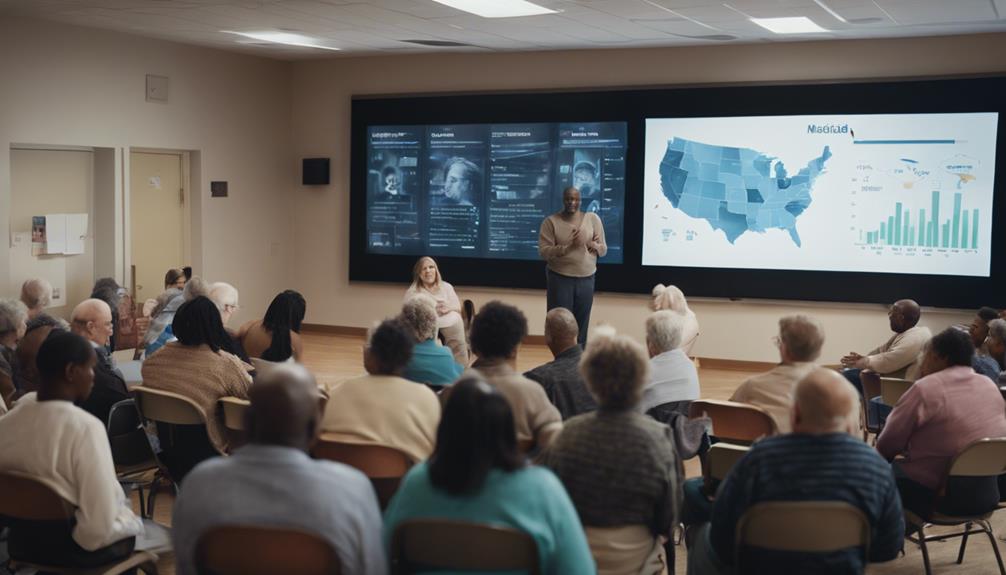
In the vibrant tapestry of American history, few changes have had as profound an impact on the lives of its citizens as the enactment of Medicare and Medicaid. Established in the mid-20th century, these programs have become cornerstones of the nation’s healthcare system, ensuring that millions of people have access to essential medical services. Let’s embark on a cheerful journey through their birthdays, exploring the evolution of healthcare in America and the monumental events that led to their creation.
A Cheerful Journey Through Medicare and Medicaid’s Birthdays
As we celebrate the birthdays of Medicare and Medicaid, we reflect on a time when healthcare was a privilege rather than a right. These programs emerged from a deep-seated desire for change, shining a light on the importance of accessible care for all. From their inception in the mid-1960s, both Medicare and Medicaid have grown and adapted, becoming vital fixtures in American society. It’s a story of compassion, advocacy, and progress that continues to inspire us today.
On July 30, 1965, a joyful atmosphere enveloped the White House, where President Lyndon B. Johnson signed the Social Security Amendments into law, birthing Medicare and Medicaid. This moment marked a turning point in American history, offering a safety net for the elderly and low-income families. The celebrations that followed were filled with hope, signaling a brighter future for healthcare in the United States.
The 1960s: A Time of Change for Healthcare in America
The 1960s were tumultuous yet transformative years in the United States, marked by a wave of social movements and an increasing awareness of the importance of healthcare. In a society where many older adults struggled to afford necessary medical care, the need for a program that would provide coverage became urgent. Activists and community leaders rallied together, advocating for a more equitable healthcare system that would address these disparities.
During this decade, the intersection of civil rights and healthcare reform galvanized a generation of advocates who sought to put an end to discrimination in medical services. Both Medicare and Medicaid emerged in this context, reflecting a fundamental shift in societal values towards inclusivity and care for the most vulnerable members of the population. This was a time of hope and unity, as the nation began to understand that healthcare is a right that should be accessible to all.
Celebrating 1965: When Medicare Took Its First Steps
The year 1965 heralded the arrival of Medicare, a program designed specifically to serve the healthcare needs of Americans aged 65 and older. With its launch, millions of seniors who previously faced crippling medical bills were finally able to receive the care they needed without fear of financial ruin. The program was groundbreaking, providing hospital insurance and medical services like never before, and it was received with cheers from families across the country.
As Medicare took its first tentative steps, it also marked a significant shift in how Americans perceived aging and health. With coverage in place, seniors could focus on their well-being and enjoy their golden years without the pall of financial worry. This newfound freedom brought joy to countless households, showcasing how a compassionate approach to healthcare could uplift lives and foster community spirit.
Medicaid Joins the Party: Expanding Care for All!
Hot on the heels of Medicare’s success, Medicaid burst onto the scene, bringing with it a promise of care for low-income individuals and families. Signed into law on the same day as Medicare, Medicaid aimed to fill the gaps that Medicare left, ensuring that health services were available to those who needed them the most. This social safety net became a beacon of hope for millions struggling to afford medical care.
Medicaid’s arrival was particularly significant for children and pregnant women, who often faced barriers to accessing healthcare. The program opened new doors, allowing families to seek medical treatment without the fear of crippling costs. As Medicaid joined the party, it symbolized a commitment to health equity, creating a more inclusive system that catered to diverse populations across the nation.
Key Figures: Meet the Champions Behind Medicare/Medicaid
No journey is complete without its champions, and the creation of Medicare and Medicaid was no exception. Among the key figures was President Lyndon B. Johnson, whose vision and determination played a pivotal role in bringing these programs to fruition. His unwavering belief in the right to healthcare for all Americans propelled the legislation forward, making a lasting impact on society.
Another influential advocate was Wilbur Cohen, a dedicated social worker and one of the architects of Medicare. His tireless efforts and passion for social justice helped shape the program’s design, ensuring that it met the needs of the elderly population. Together, these visionaries, alongside countless advocates, worked feverishly to lay the groundwork for a healthcare system that prioritizes compassion and accessibility.
A Glimpse into the Past: Looking at Healthcare Pre-1965
Before the advent of Medicare and Medicaid, America’s healthcare landscape was a daunting maze for many, particularly the elderly and the low-income population. With limited insurance options and high out-of-pocket costs, many individuals faced impossible choices between receiving medical care and maintaining financial stability. This environment fostered a sense of fear and uncertainty, as countless families struggled to navigate the complexities of healthcare access.
In this pre-1965 era, stories of hardship echoed throughout the nation. Seniors often relied on family members for support, while others went without necessary treatments. The healthcare system at the time was a patchwork of resources that frequently left the most vulnerable behind. The launch of Medicare and Medicaid marked a monumental shift, signaling the beginning of a new chapter in which care would be more equitable and accessible.
The Impact: How Medicare and Medicaid Changed Lives
The impact of Medicare and Medicaid on American lives cannot be overstated. Millions of seniors who once feared the high costs of medical services found themselves with newfound security, as the programs provided coverage for hospital stays, doctor visits, and essential treatments. This transformation allowed seniors to maintain their dignity and seek the care they deserved without the constant worry of financial burdens.
Medicaid, too, played a crucial role in reshaping lives, particularly among low-income families. For the first time, children could receive routine check-ups, vaccinations, and emergency care without their parents facing insurmountable costs. The ripple effect of these programs has been profound, leading to healthier populations and increased productivity, showcasing how investing in healthcare pays dividends for society as a whole.
Celebrating Milestones: Medicare and Medicaid Through the Years
As we look back on the decades since their inception, Medicare and Medicaid have celebrated numerous milestones that reflect their growth and adaptation to the needs of the population. From the addition of prescription drug coverage under Medicare Part D in 2003 to the expansion of Medicaid under the Affordable Care Act in 2010, these programs have continually evolved to meet the ever-changing landscape of healthcare.
Each milestone is a testament to the resilience of these programs and the ongoing commitment to providing care for all. As new challenges arise, Medicare and Medicaid have proven their ability to adapt, ensuring that the core values of accessibility and compassion remain at the forefront of American healthcare.
The Ongoing Evolution: Adapting to New Healthcare Needs
In a rapidly changing world, Medicare and Medicaid continue to evolve alongside advancements in medical technology and shifts in societal needs. From addressing the rising costs of healthcare to incorporating telehealth services, these programs work to ensure that beneficiaries receive timely and effective treatment. The journey of adaptation is ongoing, as both programs strive to remain relevant and effective in a dynamic healthcare landscape.
Furthermore, as the population ages and new health challenges emerge, Medicare and Medicaid are exploring innovative solutions to provide comprehensive care. This includes a focus on preventive services, mental health coverage, and chronic disease management. By staying attuned to the needs of their beneficiaries, these programs are not just surviving; they are thriving and shaping a healthier future for generations to come.
Cheers to the Future: What’s Next for Medicare and Medicaid?
As we toast to the future of Medicare and Medicaid, the possibilities are as exciting as they are promising. With ongoing discussions about healthcare reform and the expansion of services, there’s a hopeful sense that these programs will continue to play an essential role in the lives of Americans. The commitment to accessible, quality healthcare remains a driving force, inspiring new initiatives and policies that prioritize the well-being of all.
In the years ahead, we can anticipate fresh innovations in healthcare delivery and an increasing emphasis on patient-centered care. With advocates rallying for the rights of the underserved and a nation that values health equity, Medicare and Medicaid are poised to continue their legacy of compassion and care. Here’s to many more years of celebrating their impact and fostering a healthier, happier America!
The journey of Medicare and Medicaid is a remarkable tale of empathy, advocacy, and progress that has transformed the landscape of American healthcare. As we reflect on their origins and look forward to their future, we are reminded of the importance of ensuring access to care for all. Together, we can continue to champion the cause of health equity, ensuring that every individual, regardless of age or income, can enjoy the benefits of a healthy life. Cheers to the past, present, and future of Medicare and Medicaid!





